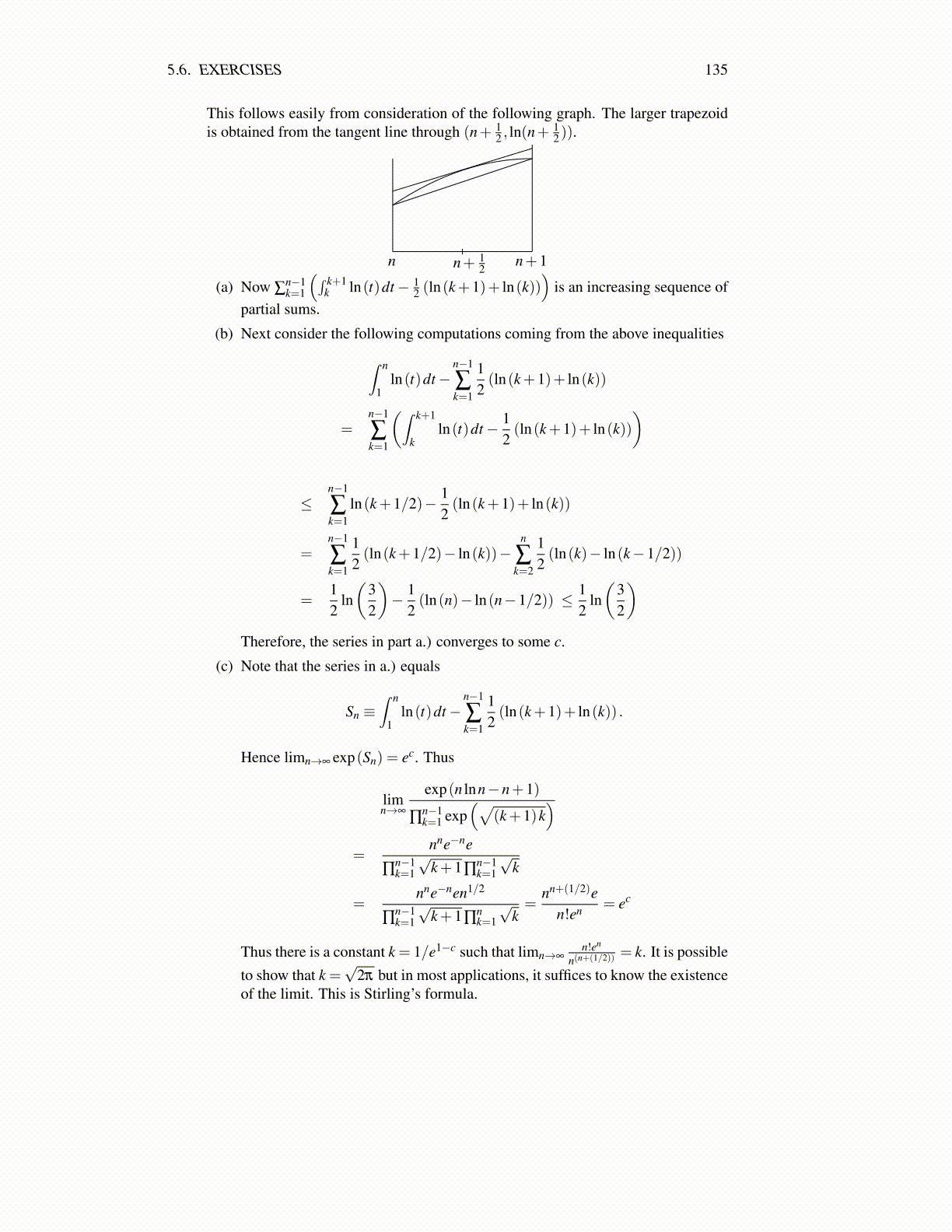
5.6. EXERCISES 135
This follows easily from consideration of the following graph. The larger trapezoidis obtained from the tangent line through (n+ 1
2 , ln(n+12 )).
n n+1n+ 12
(a) Now ∑n−1k=1
(∫ k+1k ln(t)dt− 1
2 (ln(k+1)+ ln(k)))
is an increasing sequence ofpartial sums.
(b) Next consider the following computations coming from the above inequalities
∫ n
1ln(t)dt−
n−1
∑k=1
12(ln(k+1)+ ln(k))
=n−1
∑k=1
(∫ k+1
kln(t)dt− 1
2(ln(k+1)+ ln(k))
)
≤n−1
∑k=1
ln(k+1/2)− 12(ln(k+1)+ ln(k))
=n−1
∑k=1
12(ln(k+1/2)− ln(k))−
n
∑k=2
12(ln(k)− ln(k−1/2))
=12
ln(
32
)− 1
2(ln(n)− ln(n−1/2)) ≤ 1
2ln(
32
)Therefore, the series in part a.) converges to some c.
(c) Note that the series in a.) equals
Sn ≡∫ n
1ln(t)dt−
n−1
∑k=1
12(ln(k+1)+ ln(k)) .
Hence limn→∞ exp(Sn) = ec. Thus
limn→∞
exp(n lnn−n+1)
∏n−1k=1 exp
(√(k+1)k
)=
nne−ne
∏n−1k=1
√k+1∏
n−1k=1
√k
=nne−nen1/2
∏n−1k=1
√k+1∏
nk=1
√k=
nn+(1/2)en!en = ec
Thus there is a constant k = 1/e1−c such that limn→∞n!en
n(n+(1/2)) = k. It is possible
to show that k =√
2π but in most applications, it suffices to know the existenceof the limit. This is Stirling’s formula.